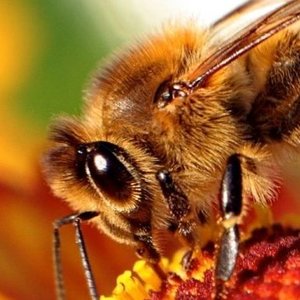Ant Mills, Insanity Loops and Waggle Dances: Ants, HiPPOs & Bees
Ant Mills
There is a phenomenon in nature called the Ant Mill. It concerns Army ants. Army ants are blind, so they travel by following the ant in front of them by tracking their pheromone (a chemical produced by animals and insects, which changes the behaviour others from the same species).
When army ants are foraging they can sometimes become separated from the main party and can lose the pheromone track. When this happens they blindly follow the ant in front of them. This leads to the formation of a continuously rotating circle called an Ant Mill. An ant will continue following the ant in front of them until all ants die of exhaustion.
The video below demonstrates the phenomenon, the ants in the middle are those dying.
The only way to escape the mill is if the leader diverts the group in a new direction.
Insanity Loops
Einstein defined Insanity as doing the same thing over and over again and expecting different results. This is sometimes known as the definition of insanity loop.
We all know about the above quote and its meaning, yet so many businesses still work within the insanity loop, why is this?
Let us for a moment park reasons such as a short-termism, farming the company to inflate current profits and the unwillingness to change for fear of losing power and position. Most companies are simply not equipped to deal with innovation and creative disruption, these are brand new skills. In addition, many employees and their accompanying skill-sets are not necessarily those required for the business today and indeed tomorrow. This leaves the company with legacy issues, which could include mindset, people, products, propositions and equipment.
This is not meant as a criticism of these companies, well except for those Ostrich Companies who stick their heads in the sand and those who block innovation.
The world of business has become a moving platform with targets also moving constantly. This makes innovation costly, time consuming and risky.

A major reason for being caught in an insanity loop is the clear absence of a North Star within a business (a Wienie in Katawave parlance). A North Star is the purpose or meaning of a company and should act as a compelling and gravitational force to lead members towards a common goal.
A Wienie needs to be so obvious that it is implicit and it works at a subconscious level. It is much like the effect of the pheromone on the ants. Without a North Star, employees become rudderless and revert to following the ant with most influence in front of them.
In the corporate world, this leading ant is the HiPPO.
HiPPOsHiPPO is the acronym for the “Highest Paid Person’s Opinion” or the “Highest Paid Person in the Office.” It describes the tendency in a hierarchal system where employees defer to highest-paid employees when a decision has to be made.
It also describes the reliance on human instinct over hard data, science, and business imagination in the decision-making process. This leads to Groupthink, where the inputs to decision making are always from the same sources. When this happens you get stuck in the insanity loop.
The insanity loop is made worse when companies are successful. Success can lead to complacency.

Picasso echoes Einstein in the quote above. If businesses keep doing the same things, following the lead of the HiPPO and using the same inputs to form opinions then they will eventually suffer the fate of the ants in an Ant Mill. We have seen successful companies fall time and time again, Blockbuster, Kodak, Nokia.
A few years ago, I would have considered most businesses to know quite a lot about their business – and indeed they do. However, this can lead to GroupThink and a lack of diversity of opinion and this leads to the insanity loop. This is why it is good to have a certain level of staff turnover in any company, because you need new thinking, you need naysayers and you need mavericks.
It goes deeper than this though. Businesses need to look beyond what they know about their business. They need to look at what industry knows about their business. Then, they need to look at what the world know about their business.
For almost a decade Katawave has been developing methodologies to enable companies to reimagine their business, understand new opportunities and see propositions they were previously oblivious to. This leads to growth, sustainability and new opportunities.
Using new inputs – previously unseeable to the company – companies begin to see their business through new lenses and thus make more informed decisions with robust data backed in science.
Once this process is done and a North star is decided, then the company can embark on a strategy. This work needs to be done pre-strategy. One of the many outputs that comes from this work is to investigate the future of the business.
This is where we can learn from the Waggle Dance of bees.
Waggle DancesAll species, including humans, are great at deciding between possible solutions, but not necessarily great at coming up with those solutions in the first place. Solution seeking is often done by mavericks, heretics and different thinkers. These people break away from the group in order to improve it.
Bees have a great method to seek solutions, which business can learn from.
When food supplies are low bees send forager bees off in various directions to find the best sources of nectar. Importantly, this is built into their mindset.
Having found a great source of food and shelter a forager returns to the hive to tell the others. The bee uses an amazing communication method called the Waggle Dance. The dance is a “figure of eight” dance, which communicates the characteristics of the discovery. The dance communicates the direction and distance to the flowers, to nearby water sources and to possible nest-site locations. The direction the bee moves in relation to the hive indicates the direction of the discovery. If the bee moves vertically, for example, the direction to the flowers is directly towards the Sun. The duration of the waggle dance signifies the distance to the flowers. With this, fellow bees go immediately to investigate the discovery based on the received information.
Like most businesses, the majority of bees maintain the hive, busy looking after “business as usual”, these are the worker bees. Meanwhile, (which is not the case with most businesses) a designated group is sent off to investigate new possibilities and new opportunities so the hive can survive and indeed thrive in the future.
You can see the Waggle Dance below, with the narration of David Attenborough
(lasts 60 seconds).
The Wisdom of the Bees lies in sending out foraging bees to look in places where the hive do not think to look.
Businesses need to do this also, but they also need to consider the step before this. This step involves examining where to look in the first place. That the smart work is done. The work done in a pre-strategy phase can determine the success of any project.
Why look for potential opportunities if you don’t know if those opportunities will resonate with your future or even current direction, with your North Star, with your people and most importantly with your customers?
